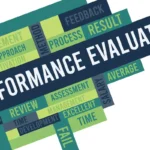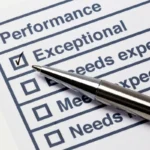The Concept of Mindset
Mindset refers to the underlying beliefs and attitudes that individuals hold about their abilities, intelligence, and potential for growth. Developed by psychologist Carol Dweck, the concept of mindset has become a crucial element in understanding how people approach learning, challenges, and ultimately, success. Mindsets shape the way individuals perceive themselves and their abilities, influencing their behavior, resilience, and overall life outcomes.
Understanding the Growth Mindset
A growth mindset is the belief that skills and intelligence can be cultivated through dedication, learning, and perseverance. This perspective contrasts with a fixed mindset, where individuals believe their traits are static and unchangeable. Students with a growth mindset view challenges as opportunities to grow, and they understand that effort and practice are essential to improving their skills. They see mistakes not as failures but as valuable experiences that contribute to their learning journey.
The Role of Mistakes in Learning
Mistakes are an inevitable part of the learning process. However, the way students perceive and respond to these mistakes varies significantly based on their mindset. For those with a growth mindset, mistakes are not just acceptable but are seen as integral to mastering new concepts. These students understand that each error is an opportunity to learn something new, refine their approach, and eventually achieve greater success.
The Growth Mindset vs. Fixed Mindset
Defining a Fixed Mindset
A fixed mindset is defined by the belief that abilities and intelligence are innate traits that cannot be substantially altered. Individuals with a fixed mindset often avoid challenges, fear failure, and give up easily when faced with difficulties. They tend to see mistakes as a reflection of their inadequacies, leading to a sense of defeat and a reluctance to try again.
Characteristics of a Growth Mindset
In contrast, a growth mindset is defined by the belief that abilities can be developed over time through dedication and hard work. Students with a growth mindset exhibit several key characteristics:
- Resilience: They bounce back from setbacks and persist in the face of challenges.
- Curiosity: They have a strong desire to learn and improve.
- Adaptability: They are willing to adjust their strategies and try new approaches.
- Optimism: They maintain a positive outlook, even when things don’t go as planned.
- Self-Awareness: They recognize their strengths and weaknesses and work to improve.
How Mindset Shapes Reactions to Mistakes
Mindset plays a critical role in shaping how students react to mistakes. Students with a fixed mindset may see a mistake as evidence of their limitations, leading to frustration, anxiety, and a tendency to avoid similar situations in the future. Conversely, students with a growth mindset view mistakes as a natural part of the learning process. They analyze what went wrong, seek feedback, and use the experience to improve their future performance.
The Science Behind a Growth Mindset
Neurological Perspectives
Recent advances in neuroscience have provided insights into how the brain supports a growth mindset. Research shows that the brain is highly plastic, meaning it can change and adapt in response to learning and experience. This concept, known as neuroplasticity, is fundamental to the growth mindset. When students engage in challenging tasks and learn from their mistakes, their brains form new neural connections, making them more adept at similar tasks in the future.
The Psychology of Learning and Mistakes
Psychologically, a growth mindset fosters a positive approach to learning. It encourages students to embrace challenges, take risks, and view mistakes as opportunities rather than threats. This mindset helps reduce the fear of failure, which can be a significant barrier to learning. By reframing mistakes as part of the learning journey, students can maintain motivation and continue striving toward their goals.
Research Studies Supporting Growth Mindset Theory
Numerous studies have validated the benefits of a growth mindset in educational settings. For instance, a study conducted by Dweck and her colleagues found that students who were taught about the malleability of intelligence were more likely to persevere in the face of challenges and achieve higher academic success. Another study demonstrated that students with a growth mindset were more likely to seek out constructive feedback and use it to improve their performance, further enhancing their learning outcomes.
How Students with a Growth Mindset View Mistakes
Mistakes as Learning Opportunities
For students with a growth mindset, mistakes are not something to be feared or avoided. Instead, they are viewed as essential learning opportunities. These students understand that making mistakes is a natural part of the learning process and that each mistake provides valuable insights into what works and what doesn’t. By analyzing their mistakes, they can identify areas for improvement and refine their approach, ultimately leading to greater mastery of the subject.

Embracing Challenges and Failure
Students with a growth mindset are more likely to embrace challenges and take on difficult tasks, even when there is a risk of failure. They understand that challenges are necessary for growth and that failure is not a reflection of their worth but a step toward success. This willingness to engage with difficult tasks allows them to develop resilience and perseverance, qualities that are essential for long-term success.
The Importance of Effort and Persistence
A key tenet of the growth mindset is the belief in the power of effort and persistence. Students with a growth mindset recognize that success is not solely the result of innate ability but is achieved through hard work and dedication. They are willing to put in the necessary effort to overcome obstacles and learn from their mistakes. This focus on effort encourages a proactive approach to learning, where students take ownership of their education and continuously strive to improve.
Comparing Reactions to Mistakes: Growth Mindset vs. Fixed Mindset
Emotional Responses to Mistakes
The emotional response to mistakes is one of the most significant differences between students with a growth mindset and those with a fixed mindset. Students with a fixed mindset may feel shame, embarrassment, or frustration when they make a mistake, often leading to a loss of confidence and a reluctance to try again. In contrast, students with a growth mindset are more likely to experience curiosity and determination. They see mistakes as a puzzle to be solved and are motivated to figure out what went wrong and how they can improve.
Long-Term Academic Outcomes
The way students perceive and react to mistakes has a profound impact on their long-term academic outcomes. Students with a fixed mindset may struggle to achieve their full potential because they are less likely to take on challenges or learn from their mistakes. Over time, this can lead to a decline in academic performance and a lack of engagement with learning. On the other hand, students with a growth mindset are more likely to excel academically. Their willingness to embrace challenges and learn from their mistakes enables them to develop a deeper understanding of the material and achieve higher levels of success.
Personal Development and Resilience
Beyond academic performance, the way students view mistakes also affects their personal development and resilience. Students with a growth mindset develop greater resilience because they learn to bounce back from setbacks and continue working toward their goals despite difficulties. This resilience extends beyond the classroom, helping them navigate the challenges of life with confidence and a positive attitude. In contrast, students with a fixed mindset may struggle with resilience, as they are more likely to view setbacks as insurmountable obstacles.
Developing a Growth Mindset in Students
Strategies for Cultivating a Growth Mindset
Cultivating a growth mindset in students requires intentional effort and practice. Teachers and parents can play a crucial role in fostering this mindset by encouraging a positive attitude toward learning and emphasizing the importance of effort and persistence. Some effective strategies include:
- Praise the process, not just the outcome: Focus on the effort, strategies, and progress students make, rather than just the final result.
- Encourage goal setting: Help students set achievable goals and create a plan to reach them, emphasizing the steps and effort required.
- Model a growth mindset: Demonstrate a growth mindset in your own behavior by embracing challenges, admitting mistakes, and showing how you learn from them.
Encouraging Positive Self-Talk
Positive self-talk is a powerful tool for developing a growth mindset. Students should be encouraged to replace negative thoughts, such as “I’m not good at this,” with growth-oriented statements like “I can improve with practice.” This shift in self-talk helps students build confidence and resilience, enabling them to approach challenges with a positive attitude.
The Role of Teachers and Parents
Teachers and parents are instrumental in shaping students’ mindsets. By providing a supportive and encouraging environment, they can help students develop a growth mindset and see mistakes as opportunities for learning. This includes offering constructive feedback, celebrating effort and progress, and encouraging a love of learning. Additionally, teachers and parents can share stories of successful individuals who overcame mistakes and challenges, reinforcing the idea that failure is a stepping stone to success.
Mistakes as a Pathway to Mastery
Iterative Learning Process
The path to mastery is often marked by a series of mistakes and corrections. For students with a growth mindset, this iterative process is a crucial part of learning. Each mistake provides an opportunity to refine their understanding and improve their skills. By repeatedly attempting challenging tasks, analyzing their errors, and making adjustments, students gradually build competence and achieve mastery.
Reflection and Feedback Loops
Reflection is a critical component of the growth mindset approach to mistakes. After making a mistake, students are encouraged to reflect on what went wrong and why. This reflection helps them identify the root cause of the error and develop strategies to avoid similar mistakes in the future. Feedback loops, where students receive constructive feedback and use it to make improvements, further enhance this process. By continuously reflecting and incorporating feedback, students can make steady progress toward their goals.
Building Competence through Practice
Practice is essential for building competence, and mistakes are an inevitable part of the practice process. Students with a growth mindset understand that repeated practice, even when it involves making mistakes, is necessary for improvement. They are willing to invest the time and effort required to hone their skills, knowing that each mistake brings them one step closer to mastery. This persistence in the face of challenges leads to greater competence and confidence in their abilities.
Case Studies: Growth Mindset in Action
Successful Students Overcoming Mistakes
Many students have achieved success by embracing a growth mindset and learning from their mistakes. For example, a student who struggled with math might initially view their mistakes as evidence of their inability to succeed in the subject. However, by adopting a growth mindset, they begin to see these mistakes as opportunities to learn and improve. With practice, reflection, and the support of a growth-oriented teacher, the student gradually overcomes their difficulties and achieves success in math.
Famous Personalities Who Embrace Mistakes
The growth mindset is not limited to students; many successful individuals in various fields attribute their achievements to their ability to learn from mistakes. Thomas Edison, for example, famously said, “I have not failed. I’ve just found 10,000 ways that won’t work.” His persistence and willingness to learn from mistakes eventually led to the invention of the lightbulb. Similarly, athletes like Michael Jordan have spoken about the importance of learning from failures and using them as motivation to improve.
Classroom Examples and Real-World Applications
In the classroom, the growth mindset can be seen in action through various teaching practices and student behaviors. For example, a teacher might create a learning environment where mistakes are celebrated as part of the learning process. Students are encouraged to take risks, try new approaches, and learn from the outcomes. This approach not only helps students develop a growth mindset but also fosters a positive and collaborative classroom culture where everyone is committed to learning and improvement.
The Impact of a Growth Mindset on Academic Performance
Higher Achievement Levels
Research consistently shows that students with a growth mindset achieve higher levels of academic success. This is because they are more likely to take on challenging tasks, persist in the face of difficulties, and seek out opportunities for learning and improvement. Over time, these behaviors lead to a deeper understanding of the material and higher academic performance.
Improved Problem-Solving Skills
Students with a growth mindset are also better problem-solvers. Their willingness to embrace challenges and learn from mistakes equips them with the skills and strategies needed to tackle complex problems. They are more likely to approach problems with curiosity and creativity, exploring different solutions and learning from their experiences. This problem-solving ability is a key factor in academic success and is highly valued in many fields.
Increased Motivation and Engagement
A growth mindset fosters increased motivation and engagement in learning. Students who believe that they can improve through effort are more likely to stay motivated, even when the material is challenging. They are also more engaged in the learning process, as they see each lesson as an opportunity to grow and develop their skills. This increased motivation and engagement lead to a more positive and productive learning experience.
The Role of Feedback in a Growth Mindset
Constructive vs. Destructive Feedback
Feedback plays a crucial role in the development of a growth mindset. However, the type of feedback students receive is important. Constructive feedback, which focuses on specific areas for improvement and offers actionable suggestions, helps students learn from their mistakes and make progress. Destructive feedback, on the other hand, can undermine students’ confidence and discourage them from trying again. It is essential for teachers and parents to provide feedback that is supportive, encouraging, and growth-oriented.
How to Give and Receive Feedback
Effective feedback is a two-way process. Students with a growth mindset are more open to receiving feedback and using it to improve their performance. They understand that feedback is not a criticism but a valuable tool for learning. To give feedback effectively, teachers and parents should focus on specific behaviors or outcomes, provide clear and actionable suggestions, and frame the feedback in a positive and encouraging manner. Receiving feedback requires students to be open-minded, reflective, and willing to take action based on the suggestions they receive.
Using Feedback to Fuel Growth
Students with a growth mindset use feedback as a catalyst for growth. They actively seek out feedback, reflect on it, and incorporate it into their learning process. By using feedback to identify areas for improvement and make adjustments, they can accelerate their progress and achieve greater success. This proactive approach to feedback is a hallmark of the growth mindset and is essential for continuous learning and development.
Challenges in Promoting a Growth Mindset
Overcoming the Fear of Failure
One of the biggest challenges in promoting a growth mindset is helping students overcome the fear of failure. This fear can be deeply ingrained, especially in environments where success is highly valued and mistakes are stigmatized. To address this, it is important to create a safe and supportive learning environment where students feel comfortable taking risks and making mistakes. By normalizing failure as a part of the learning process, teachers and parents can help students develop a more positive and growth-oriented attitude toward mistakes.
Addressing Peer Pressure and Social Comparison
Peer pressure and social comparison can also hinder the development of a growth mindset. Students may be reluctant to embrace challenges or admit their mistakes for fear of being judged by their peers. To counteract this, it is important to foster a collaborative and supportive classroom culture where students celebrate each other’s efforts and successes. Encouraging students to focus on their own progress, rather than comparing themselves to others, can also help reduce the negative impact of social comparison.
Navigating Systemic Barriers in Education
Systemic barriers, such as standardized testing and rigid grading systems, can also pose challenges to promoting a growth mindset. These systems often emphasize outcomes over the learning process, which can discourage students from taking risks and learning from their mistakes. To promote a growth mindset, educators and policymakers need to rethink these systems and create more flexible and supportive environments that prioritize learning and growth over grades and test scores.
Tools and Techniques for Fostering a Growth Mindset
Journaling and Reflective Practices
Journaling and other reflective practices are effective tools for fostering a growth mindset. By regularly reflecting on their experiences, students can gain insights into their learning process, identify areas for improvement, and develop strategies for overcoming challenges. Journaling also provides a space for students to celebrate their progress and acknowledge the effort they have put into their learning.
Growth-Oriented Learning Resources
There are many resources available that can help students develop a growth mindset. These include books, videos, and online courses that teach the principles of a growth mindset and provide practical strategies for applying them in everyday life. Teachers and parents can also use growth-oriented language and activities in their interactions with students to reinforce the mindset.
Mindset Interventions and Programs
Mindset interventions and programs are designed to help students develop a growth mindset and apply it to their learning. These programs often involve workshops, lessons, and activities that teach students about the malleability of intelligence, the importance of effort, and the value of learning from mistakes. Research has shown that mindset interventions can have a significant impact on students’ attitudes toward learning and their academic performance.
The Future of Education and Growth Mindset
Emerging Trends in Educational Psychology
As the understanding of the growth mindset continues to evolve, new trends are emerging in educational psychology. These include a greater emphasis on social-emotional learning, the integration of growth mindset principles into curricula, and the use of technology to support mindset development. These trends are helping to create more holistic and supportive learning environments that prioritize student well-being and growth.
The Role of Technology in Supporting Growth Mindset
Technology is playing an increasingly important role in supporting the development of a growth mindset. Digital tools and platforms can provide students with personalized learning experiences, real-time feedback, and opportunities for reflection and practice. Online courses, educational games, and apps designed to promote a growth mindset are also becoming more widely available, making it easier for students to develop and maintain a growth-oriented attitude.
Global Perspectives on Mindset Development
The concept of a growth mindset is gaining recognition around the world, with educators and policymakers in different countries adopting mindset principles to improve educational outcomes. Global initiatives and collaborations are helping to spread awareness of the growth mindset and its benefits, leading to more inclusive and supportive education systems. As the growth mindset continues to gain traction globally, it has the potential to transform education and help students achieve their full potential.
Frequently Asked Questions (FAQs)
What is the main difference between a growth mindset and a fixed mindset?
The main difference between a growth mindset and a fixed mindset is how individuals perceive their abilities and potential for growth. A growth mindset is the belief that abilities can be developed through effort and learning, while a fixed mindset is the belief that abilities are static and unchangeable.
Can students change from a fixed mindset to a growth mindset?
Yes, students can change from a fixed mindset to a growth mindset with the right support and strategies. This process involves shifting their beliefs about learning and intelligence, embracing challenges, and viewing mistakes as opportunities for growth.
How do teachers foster a growth mindset in students?
Teachers can foster a growth mindset in students by creating a supportive learning environment, encouraging effort and persistence, providing constructive feedback, and modeling a growth-oriented attitude toward learning.
Why is embracing mistakes important for learning?
Embracing mistakes is important for learning because mistakes provide valuable insights into what works and what doesn’t. By learning from their mistakes, students can refine their understanding and improve their skills, ultimately leading to greater success.
How does a growth mindset impact students’ future careers?
A growth mindset can positively impact students’ future careers by fostering resilience, adaptability, and a willingness to learn. These qualities are highly valued in the workplace and can help students succeed in a variety of fields.
What are some typical misconceptions about the growth mindset?
Common misconceptions about the growth mindset include the belief that it is simply about being positive or that it guarantees success. In reality, a growth mindset involves a deep commitment to learning, effort, and resilience, and while it can lead to success, it requires ongoing effort and practice.
Conclusion
The Lasting Benefits of a Growth Mindset
A growth mindset offers lasting benefits for students, both in their academic pursuits and in their personal development. By viewing mistakes as opportunities for growth, students can develop resilience, improve their problem-solving skills, and achieve higher levels of success. This mindset also fosters a love of learning that can carry students through their education and into their future careers.
Encouraging a Lifelong Love of Learning
The growth mindset is not just about academic success; it is about cultivating a lifelong love of learning. When students believe in their ability to grow and improve, they are more likely to stay curious, engaged, and motivated throughout their lives. This love of learning is a key factor in personal and professional fulfillment.
Final Thoughts on Mistakes and Growth
Mistakes are an inevitable part of life, but how we respond to them can make all the difference. For students with a growth mindset, mistakes are not setbacks but stepping stones on the path to success. By embracing challenges, learning from mistakes, and persevering in the face of difficulties, students can achieve their full potential and lead fulfilling, successful lives.










